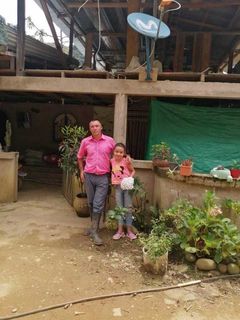February 2022
Feature #40
Forty is quite the milestone, thats one hundred and twenty individual snapshots of origins, varieties and the people who have dedicated their lives to coffee, many of whom are following in the footsteps of their parents, grandparents, great grand parents and beyond. In some cases tending to a farm that has been in the family for as long.
It seems the more we explore coffee, the more we need to explore to understand it or for our token cliche, the more we learn the less we know.
So it comes a no surprise that as Viking Coffee join us for a third time, they bring something new and unusual to bend our mind and break rules of what we thought we knew about coffee. We feel very lucky to explore Colombia for the thirteenth time (see what we did there), a new variety, a new processing technique and a coffee sourced by old friends, Cofinet.
THE PRODUCER:
Located in Gaitania region of Tolima, Colombia is Javier Rubio’s farm, Finca El Libano. A 5.5 hectare property producing coffee, alongside Javier’s other focus of preserving natural habitats for native animals, a passion that sees his farm growing 15 different types of native trees. Cultivation of this months feature lot was done with the assistance of Javier’s brother Hector, both of whom are members of Tres Royas Coffee Cooperative, a Gaitania based coffee cooperative.
Tres Royas was founded in 2016 by a group of individuals with a vision of a better future for the region. Through close partnerships with producers, the Tres Royas team assists producers to get achieve improved yield and cup quality which in turn translate to premiums that are paid directly to the families for their harvest while ensuring traceability throughout the process.
Alongside a search for better prices for their coffee, the cooperative looked for diversity, to change the perception of Gaitania being an area of conflict to one of a tourist destination, bringing alternative incomes to the region. Coffee production and marketing are undertaken alongside ASCI’SP (Association of indigenous producers of San Pedro Resguardo de Gaitania) who work in harmony with the environment to produce high quality coffee lots.
THE PROCESS:
Pulled straight from the pages of the winemakers playbook comes Carbonic Maceration. A relatively new processing method for the coffee industry, it made waves when Sasa Sestic introduced it to the industry during his world barista championship winning round in 2015.
One of the key steps in coffee processing is fermentation, A chemical reaction that happens to all coffee at some point. Historically fermentation was broken down into two common methods, dry (natural process) or wet (washed processed), with the fermentation breaking down fruit sugars with the assistance of yeast, bacteria or microorganisms.
Carbonic Maceration is a variation on a natural processed coffee, meaning the cherry is intact. The fermentation takes place in a carbon dioxide rich environment, created by placing coffee into sealed barrels and introducing C02 to displace oxygen.This in itself is a step further than the low oxygen Anaerobic fermentation (which can be done with natural or pulped / washed cherry) The result is a coffee that is rich in complex flavours as there is nowhere for the flavours or aromas to escape due to the sealed nature of the fermentation cycle.To avoid generating alcohol, fermentation is purposely kept to low temeratures.
THE VARIETY:
Discovered at Finca El Brito, Guatemala in 1949, Pache otherwise known as San Bernardo is a natural mutation of Typica. Following its discovery, individual plants were selected for their superior performance and their seeds bulked to populate the new generation, a process known as mass selection. The mass selection process began on private farms In the region El Brito, before making its way onto other regions and countries. Upon making its way to Colombia the name San Bernardo was adopted locally.
The singular gene mutation manifests as dwarfism, the smaller shrub allows for more intensive planting achieving higher yields. Boasting good cup quality at high altitude it provides the best outcomes 1200 masl and above.
The challenges associated with San Bernardo are many, known for its susceptibility to leaf rust, coffee berry disease and insect attack. Slow to maturity it takes 4 years to reach production, offering an average yield of above average size beans offering a characteristic smooth cup profile.
TASTING NOTES:
|
© Copyright A Bunch of Snobs |


